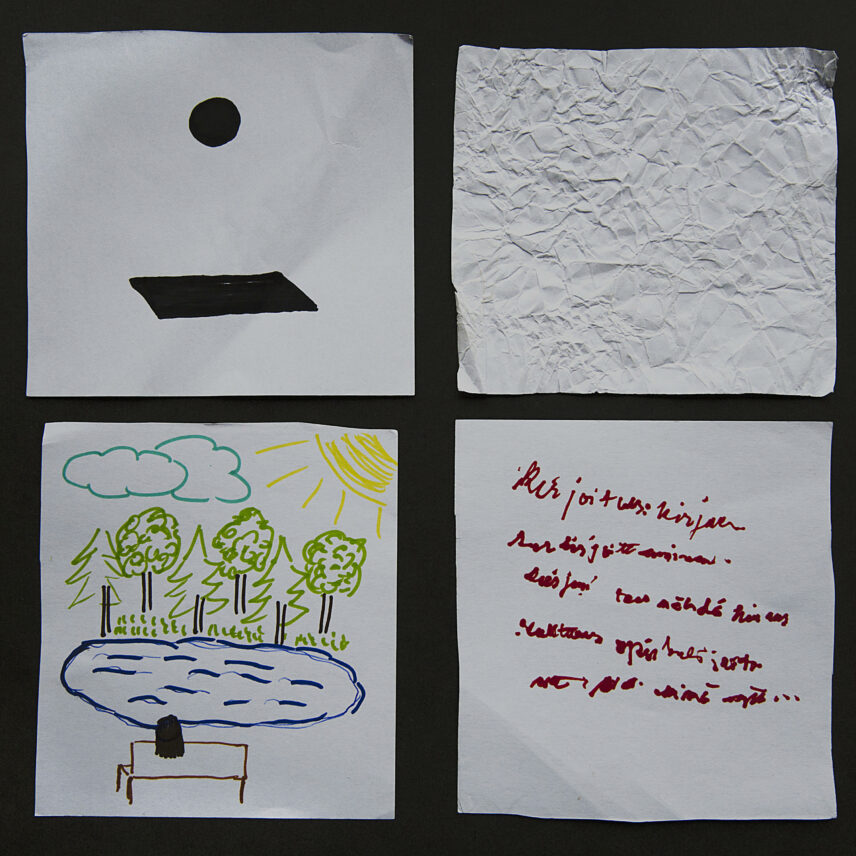Article begins

Silence: the final frontier. Six graduate students from different parts of Europe explored arts-based research as part of a week-long intensive study program in experimental ethnographic methods in Joensuu, Finland.
Provoked by the cultural stereotype of the “silent Fins,” our group was in search of “silence.” However, after a few days, it was nowhere to be found. We sought help from the people around us, handing them square pieces of blank paper with the following prompt: “Use the paper to represent silence in any way you see fit.”
Most people complied, and in the end, around 40 artworks were collected, with results ranging from pictures to symbols, words, abstract art, and origami. One person found magic in silence; another associated it with dread. The emotions and ideas varied widely, expressing many connotations of silence.
The two we want to highlight are the voluntary and the involuntary. Voluntary silence is often desired. It is symbolized by images of peaceful nature and icons of sound.However, there is another kind of silence that is to be avoided, that drives people out into the center of Joensuu. This silence is threatening, an unwelcome absence of interaction. A retired senior was so overwhelmed she refused to think about it or even take the paper square.
From analyzing the elicited artworks and the conversations about them, we discovered a multitude of associations. Silence is a state of mind. It can be peacefulness as well as loneliness; comforting or daunting. Our perception of silence differs at various stages of life. At times, we have an abundance of it; at other times, there is not enough. The only thing we conclude for certain: silence is imagined as absence. Not just of sound, but of movement, of culture, of human connection. But then—is silence the infinite background sound to everything?

